Germs on the Big Screen: 11 Infectious Movies
Germs on the Big Screen: 11 Infectious Movies

News of a disease outbreak or possible pandemic may readily conjure up Hollywood fantasies of horrible disease symptoms, government crackdowns and mass death. The very notion of infection, or viruses and bacteria invisibly taking over the human body, creates a sense of both uncertainty and helplessness that can lend itself to thoughts of doomsday. Movies have not hesitated to play out those worst-case scenarios time and again. Terrible historical diseases such as the bubonic plague make repeat appearances, as do more modern threats such as "Super flu" and Ebola. Disease seemingly goes hand-in-hand with many of our worst nightmares in movies, including vampires and zombies — and experts have pointed out how such fictional scenarios can shape public perceptions of real-life microbes. Fortunately, moviegoers can still get their big screen thrills armed with real-world knowledge from many sources on the Internet and television, not to mention print — and that's perhaps the best vaccination against the contagion of fear.
Contagion (2011)

Contagion follows the rapid progress of a lethal airborne virus that kills within days. As the fast-moving pandemic grows, the worldwide medical community races to find a cure and control the panic that spreads faster than the virus itself. As the virus spreads around the world, ordinary people struggle to survive in a society coming apart. It's a movie — but the movies' creators seem to have talked to people who actually deal with viruses and epidemics. The masses' reaction to the epidemic rings true, and the science behind it is sound, harking back to the days of SARS.
I Am Legend (2007)

New York City becomes the emptied-out backdrop for "I Am Legend," when a re-engineered measles virus meant to cure cancer goes wrong in every sense. A rapidly-mutating virus that goes airborne once again comes into play in helping wipe out the majority of humanity. Only those naturally immune to the virus survive unscathed, along with terribly mutated "Darkseekers" who resemble feral vampires. Based on a story that served as the same inspiration for a 1971 movie called "The Omega Man," this newer version shows the virologist main character (Will Smith) conducting bare-bones experiments to try and find a cure or vaccine, and uses flashbacks to depict the predictable panic behind an attempted quarantine of Manhattan. But speaking of panic, just remember this — modern humans still have it better than many of their ancestors, despite a host of new ailments.
The Host (2006)
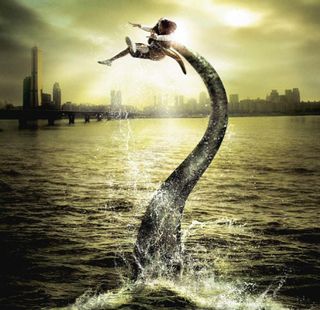
A Korean monster movie turns out to be a surprisingly touching family drama, as well as a tongue-in-cheek commentary on the response of individuals and governments alike to disease outbreaks. "The Host" tells of a mutated river monster that supposedly spreads a new virus, not dissimilar to real-world animals that can pass on certain diseases to humans. The monster's first attack causes widespread panic and an overbearing government clampdown complete with anti-bioterrorism units, decontamination efforts and mass quarantine. Individuals become hyperaware and suspicious of any symptoms of sickness, with masks appearing everywhere in public. The movie also adds to the sense of paranoia by making direct references to the real-life SARS outbreaks that struck Asia and reached 37 nations around the world, including the United States.
28 Days Later (2002)
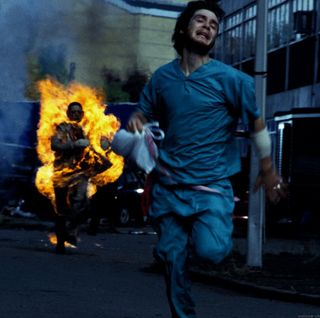
Zombie movies since George Romero's "Night of the Living Dead" have explored ideas of infection, but "28 Days Later" gave the genre a modern reboot. Here, Great Britain's downfall comes about through lab monkeys infected by the fictional "Rage" virus, which spreads like the real-life Ebola virus and causes an instant case of rabies-like madness. Throw in a few overly-idealistic animal activists for good measure, and the British Isles are soon overrun by blood-spewing "infected" who attack everyone on sight. Still, experts point out that real-world diseases don't work instantaneously or spread as rapidly as they do in such movies, so don't head for the hills — the filmmakers say that they took some creative license to play on bioterrorism scares. And in real life, Ebola currently poses a far greater threat to gorillas than to humans.
12 Monkeys (1995)
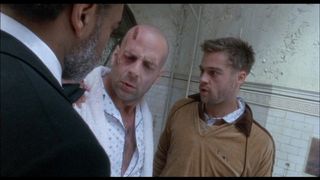
This science fiction cult classic depicts a post-apocalyptic future ravaged by an unnamed virus. Human survivors who live underground apparently can't use modern (or future) medicine to develop a vaccine or antiviral cure, but instead try using time travel to prevent the original outbreak that doomed most of humanity. Little information surfaces about the virus, which suits a movie that spends more time exploring Judeo-Christian metaphors, time travel issues and the darker corners of the human psyche. The story also touches on the potential threat of bioterrorism, and perhaps provides a small reminder of how much scientists still have to learn about microbes in this world.
Outbreak (1995)
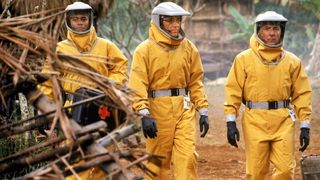
Perhaps few diseases frighten as much on sight as that caused by the Ebola virus, which can lead to massive internal bleeding and virtual liquefaction of unfortunate victims. Fortunately, outbreaks have been few and far between, but still scary enough to inspire Hollywood fare such as "Outbreak." The fictional "Motaba" virus in the movie starts in Africa and eventually reaches the U.S. due to an infected monkey, which leads to a strong military response to quarantine the affected area. Unlike the real-world Ebola virus, which mainly spreads through contact with body fluids, the fictional Motaba virus mutates and becomes a serious airborne threat. Ironically, this fictional account beat out a never-made rival film called "Crisis in the Hot Zone," based on the nonfiction thriller written by journalist Richard Preston.
And the Band Played On (1993)
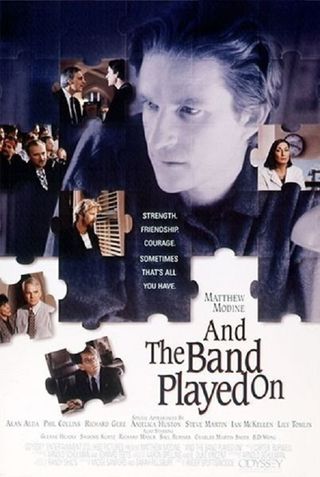
Reality proves just as compelling as fiction in recounting the early years of the AIDS epidemic, as told by journalist Randy Shilts in his book "And the Band Played On." The HBO movie adaptation similarly tells the real story of epidemiologists trying to make sense of mysterious deaths among the gay communities in San Francisco and New York during the 1980s. Government response was slowed by stigmas associated with the gay community, and scientists also spent time debating the nature of the HIV virus and who deserved credit for the discovery of AIDS. The movie shows "how government and public health response may be affected by politics and how sometimes the response happens in spite of it," said Sarah Bass, a public health researcher at Temple University in Philadelphia. Shilts himself died from AIDS complications a year after the film version came out.
The Stand (1994)

Flu gets its day in the miniseries adaptation of one of Stephen King's most popular stories, "The Stand," where a human-engineered variant of "Super flu" escapes from a lab and wipes out nearly the entire world population. It's an extreme scenario that strikes uncomfortably close to real incidents in history, such as the 1918 "Spanish flu" pandemic that killed 50 million people worldwide. Some people who had felt well in the morning were deceased by nightfall during that historic episode — but don't panic just yet. Even the worst-case scenario for the H1N1 outbreak of 2009 does not begin to approach the lethality of the 1918 Spanish flu, let alone threaten to extinguish human life on Earth.
The Andromeda Strain (1971)
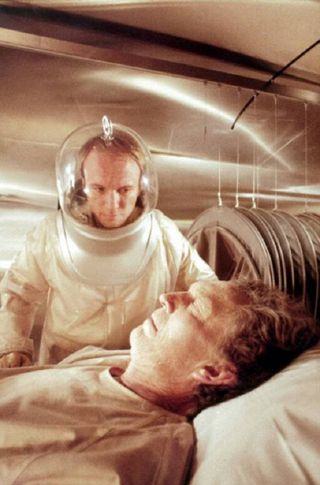
Extraterrestrial threats don't all need lasers — some arrive as microscopic agents that infect or kill humans en masse. Based on a novel by the late Michael Crichton, this movie tells of a military satellite which returns to Earth contaminated by a deadly extraterrestrial microbe that kills by causing rapid blood clotting. Scientists soon determine that the foreign invader came from a meteor that struck the satellite. That notion of space rocks carrying extraterrestrial life to Earth holds serious interest for real-life scientists, and some suggest that life on our planet may have some sort of off-world origin. But at this time, NASA worries more about its robotic explorers contaminating Mars or other worlds with Earth microbes.
The Seventh Seal (1957)

Few infectious movies have dared face Death itself like "The Seventh Seal." This masterpiece by director Ingmar Bergman tells of a Swedish knight who returns from the Crusades and finds himself face to face with the grim reaper, personified as a pale hooded man. The knight challenges Death to a chess game to play for time, while he confronts existential questions in the time of the Black Death and tries to save a few unmarked souls. It's a movie more notable for metaphorical beauty than historical accuracy concerning either the bubonic plague or medieval Europe, but it captures the human struggle to make sense of dark times, such as during epidemics.
Sign up for the Live Science daily newsletter now
Get the world’s most fascinating discoveries delivered straight to your inbox.













